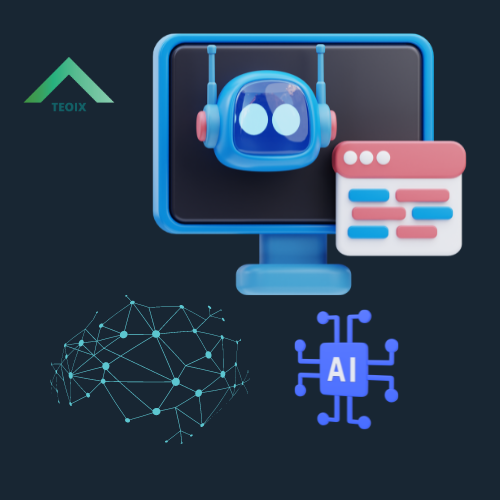Computer Vision in AI: Transforming Perception and Interaction
ARTIFICIAL INTELLIGENCE
5/30/20244 min read


The goal of the dynamic field of computer vision (CV) within artificial intelligence (AI) is to empower robots to comprehend and make judgments based on visual information from their environment. It integrates methods from the fields of engineering, neuroscience, and computer science to create algorithms that analyze pictures and movies and mimic the functioning of the human visual system. Recent developments in deep learning, specifically in machine learning, have thrust CV into the public eye and spurred advances in a range of industries, from autonomous automobiles to healthcare.
Historical Context and Evolution
Early work in computer vision were centered on simple image processing tasks like edge detection and pattern identification, and they date back to the 1960s. Due to computational limitations and a limited grasp of the complexity involved in visual perception, researchers attempted to imitate human vision by building algorithms that could distinguish objects, albeit their efforts were not entirely successful.
With the introduction of increasingly advanced image processing methods and the creation of machine learning algorithms, the 1990s saw tremendous advancements. But a turning point was brought about by the development of deep learning, specifically convolutional neural networks (CNNs). CNNs transformed CV by significantly increasing the accuracy of image recognition tasks, a breakthrough made possible by Yann LeCun and his team in the late 1980s. Deep learning's potential was highlighted by AlexNet's victory in the 2012 ImageNet competition, which sparked a wave of study and application development. AlexNet is a large-scale visual database project.
Key Technologies and Methods
Image Recognition and Classification:
This core CV technique is finding features or objects within an image. CNNs are now the mainstay of image classification, using numerous layers of processing to emulate the hierarchical structure of the human visual brain and identify patterns.
Object detection:
This technique looks for and recognizes several things in a scene, going beyond simply identifying what is present in a picture. New benchmarks have been set by algorithms such as YOLO (You Only Look Once) and Faster R-CNN, which allow for high accuracy real-time object detection. These technologies are essential for applications including retail analytics, autonomous driving, and monitoring.
Semantic segmentation is a technique where a picture is divided into segments and then each segment is classified into a set of preset categories. In situations like medical imaging, when accurate identification of tissues and organs is necessary, it is critical to comprehend the context and relationships between objects inside a scene.
Instance Segmentation:
An improvement on semantic segmentation, instance segmentation distinguishes between several items of the same class inside an image in addition to classifying every pixel. One well-known model in this field that is applied to anything from augmented reality to agriculture is Mask R-CNN.
GANs, or Generative Adversarial Networks:
GANs were first presented by Ian Goodfellow and associates in 2014. They are made up of two neural networks that compete with one another: a discriminator and a generator. Applications for this adversarial process include art development, image super-resolution, and the synthesis of synthetic data. It yields astonishingly lifelike visuals.
Applications and Impact
Autonomous Vehicles:
One of the most well-known uses of CV is in autonomous vehicles. In order to understand their environment, identify obstacles, read traffic signs, and make wise navigational judgments, autonomous systems mostly rely on CV. Leading companies such as Tesla, Waymo, and Uber are utilizing cutting-edge CV algorithms to improve the security and effectiveness of their automobiles.
Healthcare:
In the field of medical imaging, CV algorithms help with disease diagnosis, scan analysis, and even surgery. AI-powered systems, for example, can help radiologists identify abnormalities in MRI scans, identify early indicators of cancer in mammograms, and enable highly precise robotic-assisted surgeries.
Retail and e-commerce:
By improving consumer experiences and streamlining processes, CV technologies are revolutionizing the retail industry. Applications include real-time inventory tracking and automated checkout processes, as well as customized shopping encounters enabled by recommendation and visual search engines.
Agriculture:
Precision agriculture uses CV to identify pests and illnesses, track crop health, and streamline harvesting procedures. Aerial footage is provided by drones with CV capabilities, which empowers farmers to make data-driven decisions for better productivity and resource management.
Security and Surveillance:
With features like facial recognition, anomaly detection, and real-time monitoring, CV is an essential component of contemporary security systems. These technologies improve operating efficiency and safety in a variety of contexts, including public areas and commercial businesses.
Challenges and Future Directions
Even with its impressive progress, CV still has a number of issues. One major concern is making sure CV systems are durable and reliable in a variety of dynamic situations. Reducing training data biases and enhancing model generalization are still important research topics. Furthermore, frameworks that strike a balance between individual rights and technology benefits must be developed due to ethical considerations, particularly those pertaining to privacy and monitoring.
In the future, CV's integration with other AI fields like robotics and natural language processing should open up new avenues. In order to build trust and encourage wider usage, explainable AI research is now focused on improving the transparency and interpretability of CV models. Furthermore, developments in quantum computing have the potential to speed up CV algorithms and beyond present capabilities.
To sum up, computer vision is a revolutionary force in AI that is changing industries and improving human skills. The potential of CV to completely change how we engage with the outside world is growing as new technologies and research advances. This could signal the arrival of a time when robots will be able to perceive, comprehend, and interact with their surroundings in incredibly sophisticated ways.


